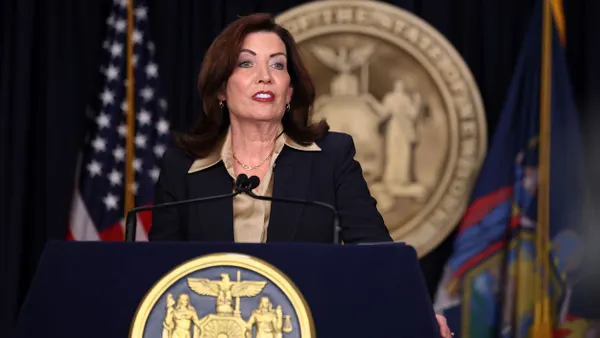Dive Brief:
- Incoming West Virginia House Speaker, Republican Tim Armstead, has already attacked H.B. 103, the Alternative and Renewable Energy Portfolio Standard, pushed through in 2009 by then-Governor and now-Senator Joe Manchin (D).
- Armstead said his House’s first priority in January will be repealing the mandate, requiring utilities to obtain 10% of their power from alternatives by 2015, 15% by 2020, and 25% by 2025, according to Charleston MetroNews.
- Armistead, who derisively and inaccurately labels the mandate a "cap-and-trade" law, says it allows power cost increases to be passed directly to ratepayers. Armitead’s Republican majority is expected to be able to overturn the mandate because Democrats otherwise inclined to defend it may choose to rely on the EPA’s Clean Power Plan to drive investment in renewables.
Dive Insight:
Although far from a cap-and-trade program like California’s, the mandate does allow utilities to earn credits for generating electricity from alternative or renewable fuels and allows any in excess of the mandate to be traded or sold.
Because of West Virginia’s powerful coal sector, Manchin included coal gasification and liquefaction as part of the eligible energy alternatives in the mandate. He has reapeatedly opposed actual cap-and-trade legislation on the federal level, firing a bullet through a copy of one such bill in a 2010 campaign ad.
Cap-and-trade is a market based system designed to cut greenhouse gases emissions (GHGs) from sources across the economy, not just in electricity generation. Cap-and-trade puts a hard limit on GHGs and allows emitters of all kinds to find their most economic path to reductions. The cap declines in predictable increments, driving further market activity and emissions reductions.
Emitters who achieve GHG reductions greater than the requirement can sell allowances to businesses who cannot meet their minimum requirement. This establishes a price on carbon. The higher the price, the more emissions reduction technology becomes economically viable.











